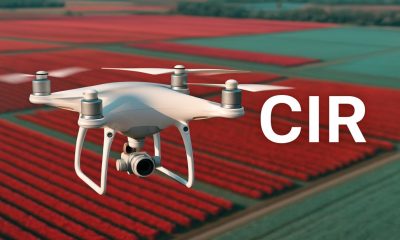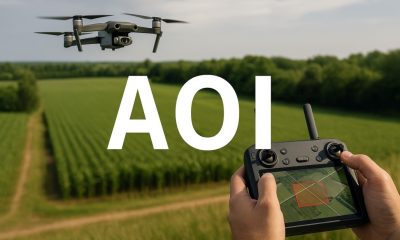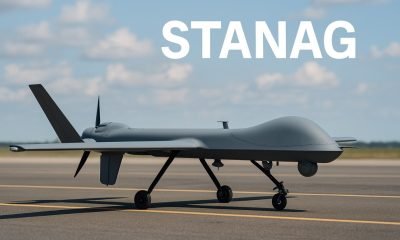- Acronym Guide
- AAM
- ABS
- AC
- ACAS
- ADS-B
- AFAC
- AGL
- AI
- AIM
- ALS
- AM
- AMA
- ANSP
- AOI
- APPI
- AUV
- AUVSI
- ARPAS-UK
- ASTM
- ATC
- BVLOS
- CAA
- CAAC
- CAB
- CASA
- CATT
- CBO
- CBR
- CBRN
- CDMA
- CDR
- CFR
- CIR
- COA
- COMINT
- CORS
- COTP
- COTR
- CPTED
- CV
- C2
- DAA
- DEM
- DFI
- DFS
- DGCA
- DHS
- DOD
- DPA
- DPEs
- DRG
- DRO
- DSM
- DSMX
- DSP
- DSSS
- DTM
- EASA
- EFT
- EO
- EOD
- EO/IR
- ELINT
- EMI
- ESC
- EVLOS
- eVTOLs
- FAA
- FCC
- FCS
- FHSS
- FICCI
- FLIR
- FOB
- FOV
- FPS
- FPV
- GBDAA
- GCP
- GCS
- GDPR
- GML
- GNSS
- GPS
- GSD
- GVC
- HDR
- HOGE
- IACRA
- ICAO
- ICS
- IMU
- INS
- IR
- ISA
- ISR
- ITU
- JARUS
- LAAMS
- LAANC
- LAATM
- LAI
- LBA
- LIDAR
- LOS
- LSALT
- MAC
- MAVLink
- MLIT
- MMS
- MSL
- MTOM
- NDAA
- NCSL
- NFZ
- NIST
- NMEA
- NOTAM
- NPA
- NPRM
- NTIA
- OBIA
- OEM
- OFDM
- OOP
- PASM
- PAV
- PCV
- PdM
- PEC
- PIC
- PID
- PIPL
- PLD
- PM
- PN
- PPK
- PPS
- PSM
- PWM
- UAM
- UAOP
- UAS
- UASTM
- UAV
- UCAVs
- UHD
- UHF
- USV
- UTM
- RAIM
- RCC
- RCS
- RFI
- ReOC
- RePL
- RMS
- ROI
- RPAS
- RPC
- RTH
- RTK
- SaR
- SAR
- SARP
- SBAS
- S.Bus
- SBIR
- SEDENA
- SfM
- SFOC
- SIGINT
- SLAM
- SMS
- SORA
- STANAG
- STTR
- sUAS
- TCAS
- TCCA
- TFR
- TIN
- TOF
- TP
- TPS
- TSA
- VHF
- VLOS
- VTOL
Drone Acronyms
What is COTP (Certificate of Transport Permit)?
Published
2 months agoon
By
Jacob StonerTable Of Contents

Definition
COTP, or Certificate of Transport Permit, is a formal authorization that allows drones or their payloads to be legally transported or operated for specific purposes—often involving security-sensitive cargo, high-value equipment, or restricted areas. In some jurisdictions, this certificate is required to ensure that drone transport activities comply with national regulations, particularly when the drone carries surveillance gear, hazardous sensors, or is flown in critical airspace.
Usage
COTPs are typically issued by government authorities or aviation regulators and are required for drone missions that involve transporting special payloads, crossing regional borders, operating near sensitive infrastructure, or participating in law enforcement or military operations. The permit specifies transport conditions, valid routes, flight zones, and security protocols.
Relevance to the Industry
As drones take on more roles in law enforcement, defense, critical inspections, and cargo delivery, the need for a COTP ensures legal traceability and accountability. It acts as a safeguard against misuse and ensures operations are vetted and cleared before deployment. For companies operating internationally or in high-risk zones, having a valid COTP is often essential for contract approval and regulatory compliance.
How Does COTP (Certificate of Transport Permit) Work?
The Certificate of Transport Permit (COTP) works by formalizing government authorization for specific drone operations involving sensitive cargo, mission-critical surveillance, or flights through controlled or restricted airspace. The process ensures that drone transport and use follow national security, aviation, and customs protocols. Here’s how it works in practice:
Permit Application Submission
Drone operators must apply to the appropriate authority (civil aviation, defense ministry, or homeland security office) before the mission begins. The application typically includes:Detailed mission plan and flight route
Description of the payload (e.g., surveillance optics, encrypted transmitters, sensors)
Operator credentials and drone registration
Risk mitigation strategies and insurance
Background and Payload Screening
Authorities review the drone’s specifications, the nature of the mission, and the operator’s background. If the payload includes sensitive or hazardous materials (e.g., thermal imaging, radio transmitters, or defense-grade optics), further vetting may be required to assess security risks and ensure legal transport.Approval and Permit Issuance
Once cleared, a formal COTP is issued outlining:Approved flight window and route
Airspace limitations or ATC coordination requirements
Restrictions on altitudes, proximity to sensitive sites, and operating hours
Conditions for emergency procedures or law enforcement interaction
Operational Monitoring and Accountability
Some COTPs require live location tracking or periodic position reporting, especially during cross-border flights or when operating in shared airspace with manned aircraft. Remote ID compliance is often mandatory.Post-Mission Reporting (in some regions)
After completion, operators may be required to submit a flight log or incident report summarizing the mission. This accountability helps authorities track drone activity related to security operations, asset transport, or aerial surveillance.
By structuring secure drone operations under a formal COTP, governments ensure transparency, safety, and compliance—especially when flights intersect with national security, protected facilities, or the transport of high-value or sensitive technology.
Example in Use
“The drone team obtained a Certificate of Transport Permit (COTP) before flying their surveillance UAV over the seaport’s restricted zone as part of the anti-smuggling operation.”
Frequently Asked Questions about COTP (Certificate of Transport Permit)
When is a COTP required for drone operations?
Answer:
When flying drones carrying sensitive surveillance equipment.
For missions near military bases, power plants, or critical infrastructure.
During transport of drone payloads across national or regional borders.
In operations requiring heightened airspace or cargo security.
Who issues a Certificate of Transport Permit?
Answer:
National aviation authorities (e.g., FAA, Transport Canada, or regional equivalents).
In some cases, defense or homeland security departments in coordination with aviation regulators.
How does a COTP differ from standard drone registration or licensing?
Answer:
A drone license certifies the pilot or system for general operation.
A COTP is mission- and cargo-specific, focused on legal clearance for particular types of flights involving sensitive operations or regions.
For examples of these acronyms visit our Industries page.
As the CEO of Flyeye.io, Jacob Stoner spearheads the company's operations with his extensive expertise in the drone industry. He is a licensed commercial drone operator in Canada, where he frequently conducts drone inspections. Jacob is a highly respected figure within his local drone community, where he indulges his passion for videography during his leisure time. Above all, Jacob's keen interest lies in the potential societal impact of drone technology advancements.











